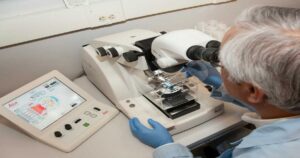Workers in the healthcare industry are among the most burned out demographics following the COVID-19 pandemic. In fact, a report by Medscape on physician burnout and depression in 2022 calculated a five-percentage point increase in burnout overall, from 42% in 2020 to 47% in 2021. Critical care physician burnout was also found to increase from 44% to 51% last year, placing them at the top of Maryville University’s list of physician specialties with the highest cases of burnout. This is closely followed by rheumatology physician burnout, which was 50% in 2021. At the bottom of the list, emergency medicine physician burnout still came in close at a rate of 44%.
Burnout can result in, among other things, exhaustion and a loss of concentration, which can be dangerous in healthcare. With that, advancements in technology have been made to help mitigate stress and reduce the chances of burnout in healthcare.
Maximum Tasks, Minimum Efficiency
Reports show that many technological advancements in the healthcare industry actually aren’t appropriate for managing physician workloads. This is due to the range of tasks physicians need to perform, from creating treatment plans to managing EHRs. Our previous discussion on EHR-Generated Messages highlighted how the misapplication of this algorithm had actually led to these inboxes getting clogged. This has primary care physicians spending more than half their workday interacting with EHRs that only remind physicians to order certain tests, instead of dealing with critical messages from patients or colleagues. This has been counterproductive in terms of efficiency, leading to more burnout symptoms and the tendency to reduce clinical work hours. It is therefore important that technology integrations consistently consider the broader picture of the tasks of physicians.
Tech Developments for Reducing Burnout
Shifts in the industry have thus begun to focus on the quality of efficiency and physician assistance, rather than the quantity of technology available. Here are some notable examples of technology that has become finely integrated within the healthcare industry.
Ambient Technology in Clinical Documentation
Ambient computing streamlines the clinical documentation process by using artificial intelligence to respond to human behavior and needs. This provides front-end speech and computer-assisted documentation, reducing the time needed for physicians to work on admin tasks, and thereby minimizing burnout. Smart hospitals have started leveraging this through sensor-based solutions, and experts from Michigan University believe usage must be made easier and simpler to use for the provider if the healthcare industry is to further leverage ambient computing for CDI. As of 2021, adoption has only started to take off, especially in the revenue cycle.
Computer Modeling in Vaccine Development
The traditional process of designing novel vaccines usually lasts 10 to 15 years and can cost between $200 million and $500 million. However, a feature by News Medical highlights the recent development of COVID-19 vaccines, which uncovered the capabilities of computational modeling systems. This showed an ability to predict which parts of a pathogen may be recognized by the immune system’s B cells and T cells. This allows rapid identification of vaccine targets from a genetic sequence, which reduces the years required for preclinical research. Physicians are thus able to respond faster to vaccine developments, and reduce the overload of health systems during any future pandemics or epidemics in the long term.
Patient Placement Technology
The shortage of physicians is a common setback in the industry, one that staff at the Rice County District Hospital in Lyons, Kansas mitigated using patient placement technology. Patient placement technology coordinated care for patients inside the 25-bed, level 4 hospital, as well as those needing to be transferred to another facility. By integrating local EMS and other transport services with health systems, manual telephone calls were no longer necessary. Hence, physicians were able to quickly and effectively get patients the care they needed while managing time-critical diagnoses. This maximizes the limited resources available without stretching out the workforce. Physicians are able to focus solely on their patients, knowing that the time-consuming logistics are being efficiently handled by technology. The industry needs to continue to look into the practices of reducing burnout among physicians, more so as we continue to recover from the effects of the COVID-19 pandemic. By emphasizing physician wellness and efficient technology, we can continue to assure the health and productivity of healthcare workers into the future.



